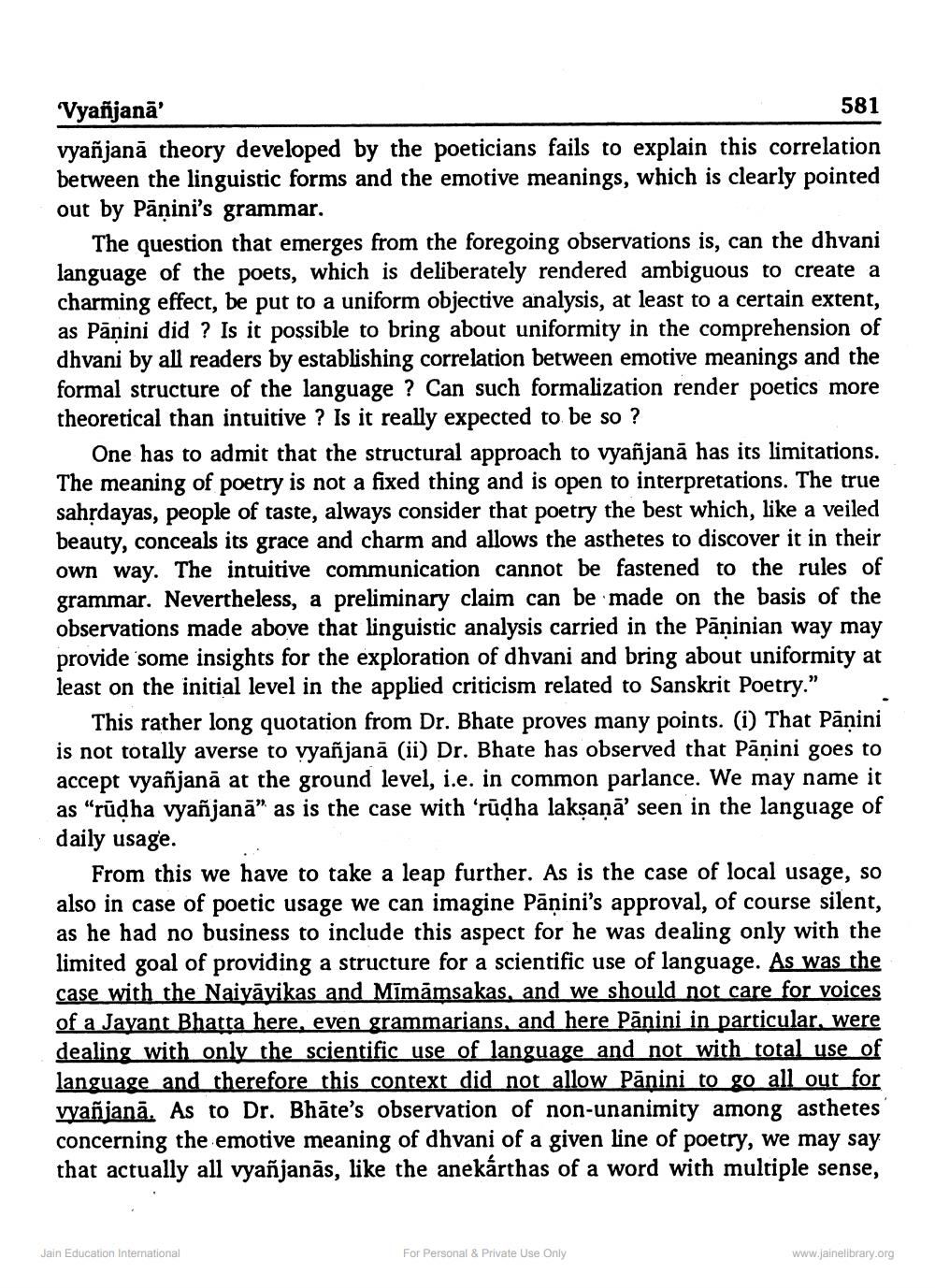________________
'Vyañjanā'
vyañjana theory developed by the poeticians fails to explain this correlation between the linguistic forms and the emotive meanings, which is clearly pointed out by Panini's grammar.
581
The question that emerges from the foregoing observations is, can the dhvani language of the poets, which is deliberately rendered ambiguous to create a charming effect, be put to a uniform objective analysis, at least to a certain extent, as Panini did? Is it possible to bring about uniformity in the comprehension of dhvani by all readers by establishing correlation between emotive meanings and the formal structure of the language? Can such formalization render poetics more theoretical than intuitive? Is it really expected to be so ?
One has to admit that the structural approach to vyañjanā has its limitations. The meaning of poetry is not a fixed thing and is open to interpretations. The true sahṛdayas, people of taste, always consider that poetry the best which, like a veiled beauty, conceals its grace and charm and allows the asthetes to discover it in their own way. The intuitive communication cannot be fastened to the rules of grammar. Nevertheless, a preliminary claim can be made on the basis of the observations made above that linguistic analysis carried in the Pāṇinian way may provide some insights for the exploration of dhvani and bring about uniformity at least on the initial level in the applied criticism related to Sanskrit Poetry."
This rather long quotation from Dr. Bhate proves many points. (i) That Pāņini is not totally averse to vyañjana (ii) Dr. Bhate has observed that Panini goes to accept vyañjana at the ground level, i.e. in common parlance. We may name it as "rūḍha vyañjana" as is the case with 'rūḍha lakṣaṇā' seen in the language of daily usage.
From this we have to take a leap further. As is the case of local usage, so also in case of poetic usage we can imagine Panini's approval, of course silent, as he had no business to include this aspect for he was dealing only with the limited goal of providing a structure for a scientific use of language. As was the case with the Naiyāyikas and Mīmāmsakas, and we should not care for voices of a Jayant Bhatta here, even grammarians, and here Pānini in particular, were dealing with only the scientific use of language and not with total use of language and therefore this context did not allow Panini to go all out for vyañjanā. As to Dr. Bhate's observation of non-unanimity among asthetes concerning the emotive meaning of dhvani of a given line of poetry, we may say that actually all vyañjanās, like the anekárthas of a word with multiple sense,
Jain Education International
For Personal & Private Use Only
www.jainelibrary.org




